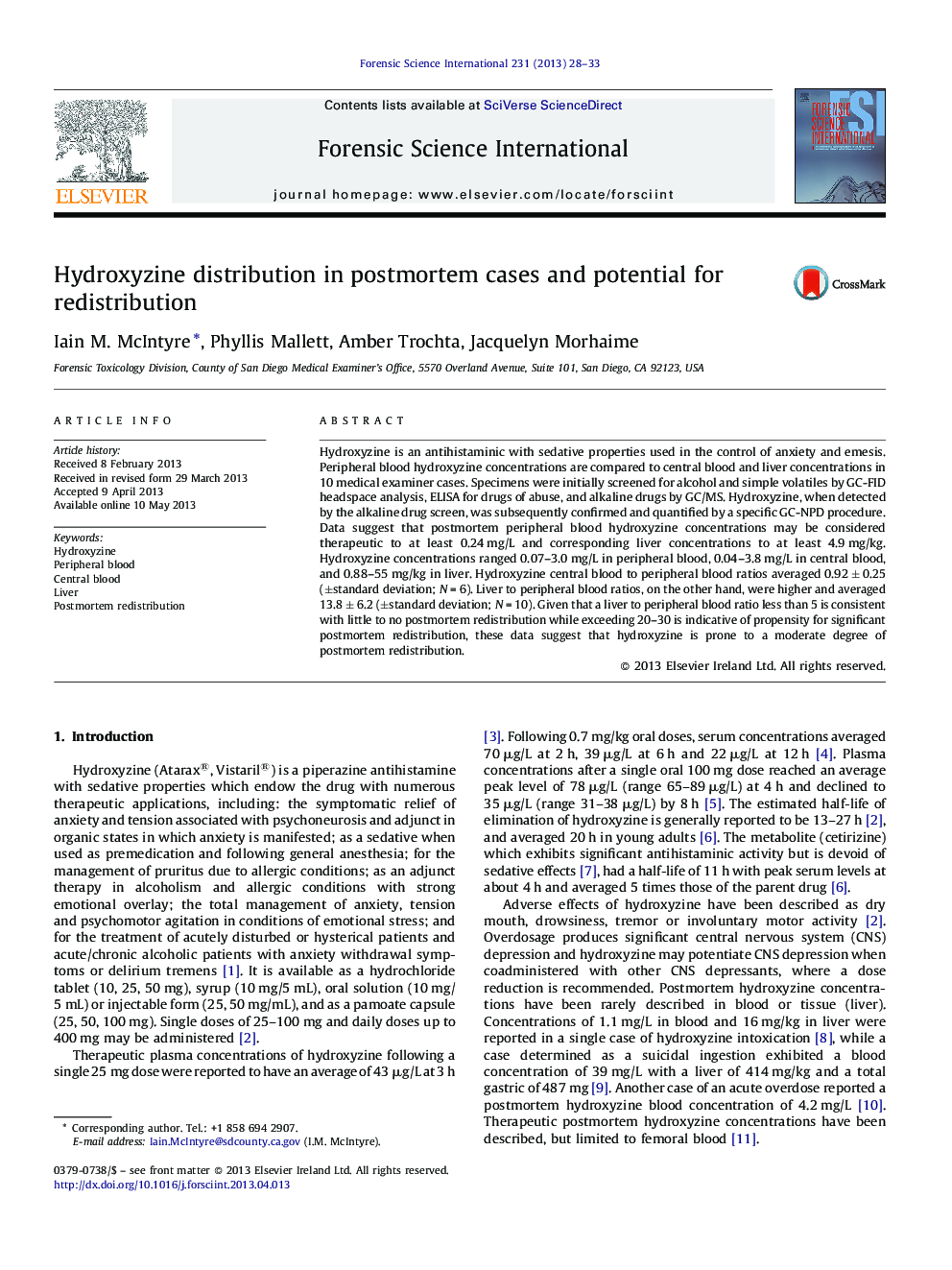| Article ID | Journal | Published Year | Pages | File Type |
|---|---|---|---|---|
| 95815 | Forensic Science International | 2013 | 6 Pages |
Hydroxyzine is an antihistaminic with sedative properties used in the control of anxiety and emesis. Peripheral blood hydroxyzine concentrations are compared to central blood and liver concentrations in 10 medical examiner cases. Specimens were initially screened for alcohol and simple volatiles by GC-FID headspace analysis, ELISA for drugs of abuse, and alkaline drugs by GC/MS. Hydroxyzine, when detected by the alkaline drug screen, was subsequently confirmed and quantified by a specific GC-NPD procedure. Data suggest that postmortem peripheral blood hydroxyzine concentrations may be considered therapeutic to at least 0.24 mg/L and corresponding liver concentrations to at least 4.9 mg/kg. Hydroxyzine concentrations ranged 0.07–3.0 mg/L in peripheral blood, 0.04–3.8 mg/L in central blood, and 0.88–55 mg/kg in liver. Hydroxyzine central blood to peripheral blood ratios averaged 0.92 ± 0.25 (±standard deviation; N = 6). Liver to peripheral blood ratios, on the other hand, were higher and averaged 13.8 ± 6.2 (±standard deviation; N = 10). Given that a liver to peripheral blood ratio less than 5 is consistent with little to no postmortem redistribution while exceeding 20–30 is indicative of propensity for significant postmortem redistribution, these data suggest that hydroxyzine is prone to a moderate degree of postmortem redistribution.
